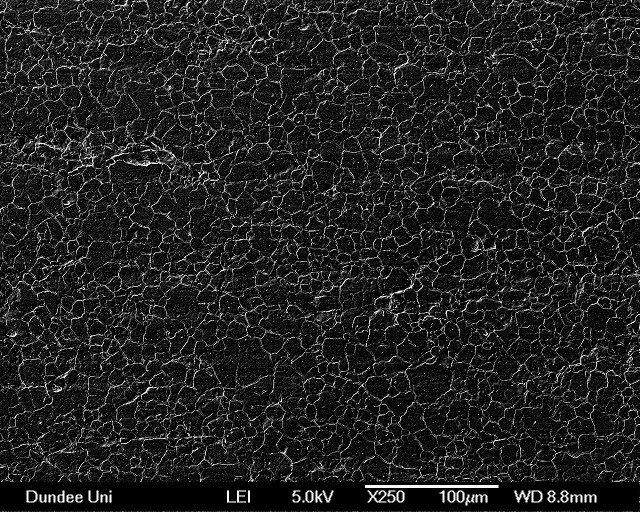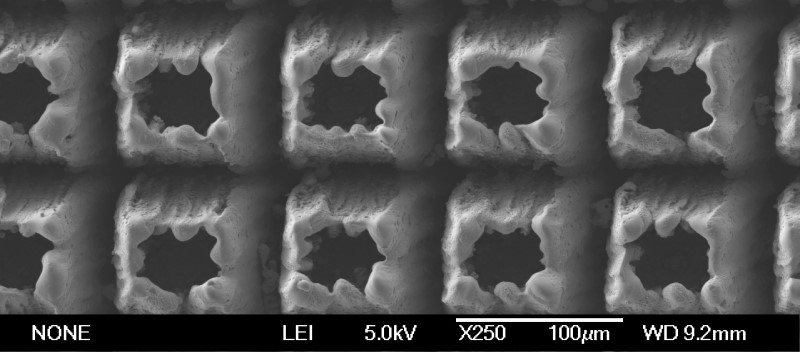 Laser technology to help take the LHC to the next level
Laser technology to help take the LHC to the next level
by Panos Charitos (CERN)
Jointly developed by researchers from the University of Dundee and the Science and Technology Facilities Council (STFC), the technology – which is known as LESS (Laser Engineered Surface Structures) – could increase the range of experiments possible on the LHC by helping to clear the so-called “electron cloud”: a cloud of negative particles which can degrade the performance of the primary proton beams that circulate in the accelerator.

Laser-engineered surface structures (Image credit: STFC Daresbury Laboratory)
Removing this electron cloud will expand the range of experiments that the LHC, the world’s largest particle collider, can carry out. Professor Amin Abdolvand, chair of functional materials and photonics at Dundee University said: “Large particle accelerators such as the Large Hadron Collider suffer from a fundamental limitation known as the ‘electron cloud’.
“This cloud of negative particles under certain conditions may degrade the performance of the primary proton beams that circulate in the accelerator, which is central to its core experiments.
“Current efforts to limit these effects involve applying composite metal or amorphous carbon coatings to the inner surfaces of the LHC vacuum chambers. These are expensive and time consuming processes that are implemented under vacuum.”
Tests have shown that it is possible to reformulate the surface of the metals in the LHC vacuum chambers to a design that under a microscope resembles the type of sound padding seen in music studios. The surface can trap electrons, keeping the chambers clear of the cloud.


The image shows the metal before the laser treatment (top) and afterwards (bottom) where one can see the characteristic pattern that resembles the type of sound padding (Image credit: Dundee University)
Future upgrades of the LHC that will double the intensity of the beams – thus resulting in a denser electron cloud – and studies for future circular high-intensity and high-energy colliders, could profit from this technique. The LESS method, which uses lasers to manipulate the surface of metals, could effectively reduce the electron cloud allowing for more powerful beams.
Professor Lucio Rossi, project leader of the High Luminosity LHC, said: “If successful, this method will allow us to remove fundamental limitations of the LHC and reach the parameters which are needed for the high luminosity upgrade in an easier and less expensive way. “This will boost the experimental program by increasing the number of collisions in the LHC by a factor over the present machine configuration.”
Michael Benedikt, head of the Future Circular Collider Study at CERN, said: “The LESS solution could be easily integrated in the design of future high-intensity proton accelerators; the method is scalable from small samples to kilometre-long beam lines.”
(*Front page image credit: Joshua Valcarel)